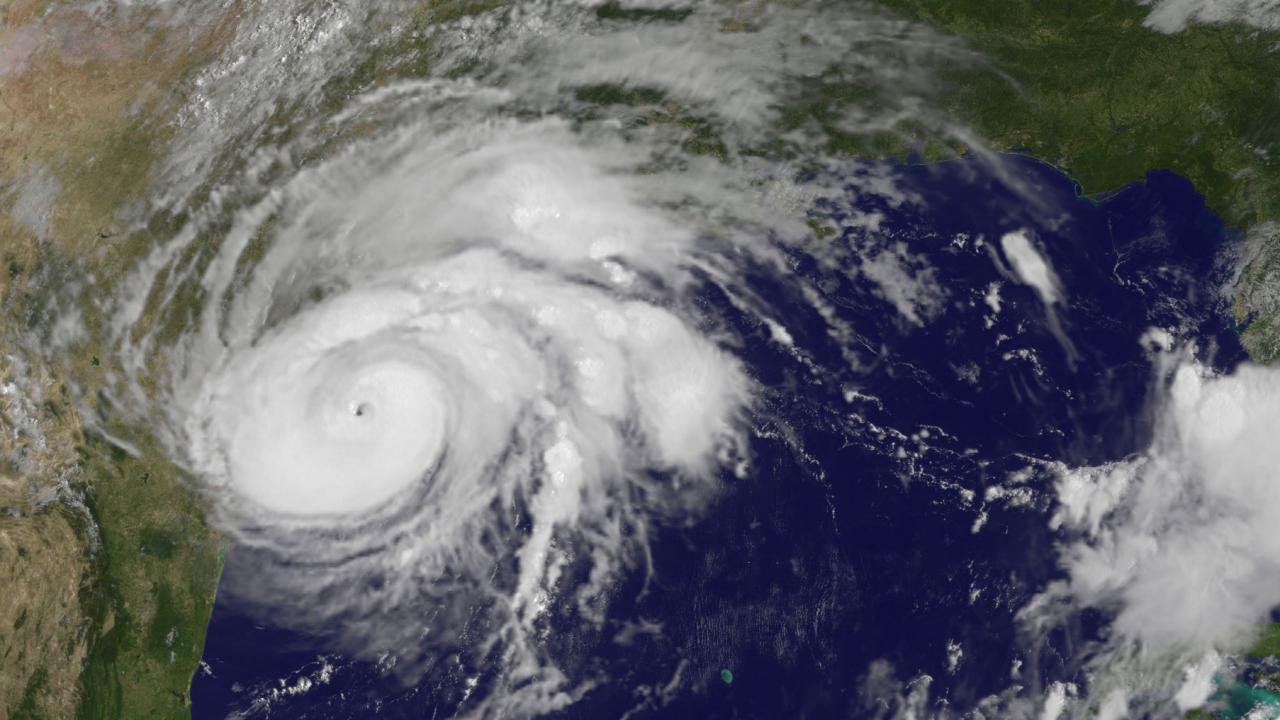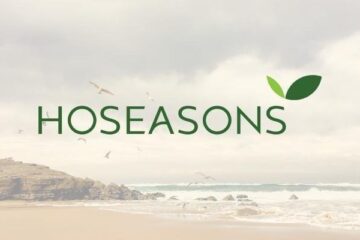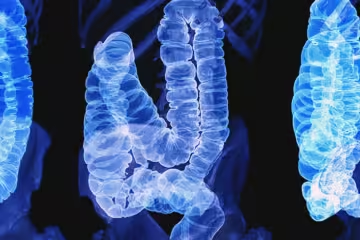Key Takeaways
- Understanding the formation and life cycle of hurricanes.
- Recognizing the environmental and climatic conditions that contribute to hurricane development.
- Learning how to prepare for and mitigate the effects of hurricanes.
Table of Contents
- What Are Hurricanes?
- Formation Of Hurricanes
- Environmental Conditions
- The Lifecycle Of A Hurricane
- Impacts And Preparations
- Historical Hurricanes
- Preparing For A Hurricane
What Are Hurricanes?
Hurricanes, also known as tropical cyclones, are robust weather systems characterized by strong winds, heavy rain, and storm surges. These natural phenomena can cause widespread destruction, particularly in coastal regions. They form under specific conditions and follow a predictable how hurricane methodology that begins over warm ocean waters. The intensity of hurricanes varies, but they all share a standard structure consisting of an eye, eyewall, and rainbands.
Hurricanes are classified based on their wind speeds and potential damage. The Saffir-Simpson Hurricane Wind Scale categorizes hurricanes from Category 1, which has winds from 74-95 mph and causes minimal damage, to Category 5, with winds exceeding 157 mph, causing catastrophic damage. Understanding the complexities behind how hurricanes form can help better predict and prepare for their impacts. Also, recognizing these classifications can aid in grasping the potential risks when a storm approaches.
Formation Of Hurricanes
Hurricanes form over warm ocean waters when certain conditions are met. Warm, moist air rises and is replaced by cooler air, creating a cycle that intensifies into a powerful storm system. This process begins with developing a tropical disturbance, which can evolve into a tropical depression, tropical storm, and, eventually, a hurricane. The journey from a tropical disturbance to a hurricane involves energy accumulation from ocean heat. As the warm air rises, it cools and condenses to form clouds and thunderstorms.
As these thunderstorms cluster together, they form a low-pressure center. Due to Earth’s rotation, the Coriolis effect causes the storm to spin, forming the characteristic cyclone shape. The system gains strength and organization by adding warm air and moisture. The process is fascinating and vital for understanding hurricane behavior and predicting its paths and potential impact. This complex interaction between atmospheric and oceanic conditions makes the science of hurricane formation an area of intense study and interest.
Environmental Conditions
Environmental conditions are necessary for hurricane formation, including warm sea surface temperatures, low wind shear, and adequate atmospheric moisture. These factors provide the energy and environment needed for the storm to grow and sustain itself. Warm sea surface temperatures are particularly crucial, as they supply the heat and moisture that fuel the hurricane. Low wind shear ensures that the storm’s structure remains intact, allowing it to intensify.
According to National Oceanic and Atmospheric Administration research, shifts in these conditions can influence hurricane frequency and intensity. For instance, increased sea surface temperatures due to climate change can lead to more powerful hurricanes. Additionally, variations in atmospheric moisture levels and wind patterns can affect the formation and track of these storms. Understanding these environmental factors is essential for improving hurricane forecasting and preparedness.
The Lifecycle Of A Hurricane
A hurricane’s lifecycle includes several stages: tropical disturbance, tropical depression, tropical storm, and finally, a hurricane. Each stage represents an increase in the storm’s organization and intensity, corresponding to potential damage. In the tropical disturbance stage, clusters of thunderstorms form but lack organized circulation. As the system develops into a tropical depression, it exhibits more organized wind patterns and lower central pressure.
During the tropical storm stage, winds increase, and the storm gains a more defined structure. The final stage, a hurricane, is marked by winds exceeding 74 mph, a well-defined eye, and intense organization. Understanding this lifecycle helps meteorologists predict a storm’s potential growth and impact. It also aids in preparing and issuing timely warnings to the public. This knowledge is crucial for reducing the loss of life and property during a hurricane event.
Impacts And Preparations
Hurricanes can have devastating impacts on human life, property, and infrastructure. Flooding, wind damage, and power outages are expected consequences. The heavy rains associated with hurricanes can lead to flash flooding, while strong winds can uproot trees, damage buildings, and disrupt power lines. Storm surges, caused by the hurricane’s winds pushing seawater onto land, can inundate coastal areas, causing severe damage and loss of life.
Preparing for hurricanes involves understanding these impacts and proactively mitigating risk. Key preparation steps include developing an emergency plan, assembling an emergency kit, securing property, and knowing local evacuation routes. Adequate preparation can significantly reduce the risks and impacts associated with hurricanes, ensuring safety and resilience in affected communities.
Historical Hurricanes
Historical data on significant hurricanes provides insights into these natural disasters’ patterns and potential risks. Learning from past events helps improve forecasting and emergency response strategies. Notable hurricanes like Katrina, Maria, and Harvey have left indelible marks and offer valuable disaster preparedness and response lessons. For example, Hurricane Katrina in 2005 highlighted the importance of robust flood defenses and timely evacuation plans.
Understanding the impacts of these historical hurricanes can guide current and future preparedness efforts. Analyzing past hurricanes’ paths, intensities, and damages helps meteorologists develop better predictive models. Based on past experiences, communities can create more resilient infrastructure and better emergency response plans, ensuring they are better equipped to handle future hurricanes. This historical perspective underscores the ongoing need for research and innovation in hurricane science and preparedness.
Preparing For A Hurricane
- Developing a family emergency plan.
- Stocking up on essential supplies such as food, water, and medications.
- Securing property to minimize damage.
- Staying informed through reliable news sources and alert systems.
Adequate preparation can significantly reduce the risks and impacts associated with hurricanes, ensuring safety and resilience in affected communities. By understanding hurricanes’ formation, lifecycle, and potential impacts, individuals and communities can take informed steps to protect themselves and their property. Awareness and preparedness are the best defenses against the devastating effects of hurricanes, and continuous learning and adaptation are crucial to staying safe.
Key Takeaways
- Understanding the formation and life cycle of hurricanes.
- Recognizing the environmental and climatic conditions that contribute to hurricane development.
- Learning how to prepare for and mitigate the effects of hurricanes.
Table of Contents
- What Are Hurricanes?
- Formation Of Hurricanes
- Environmental Conditions
- The Lifecycle Of A Hurricane
- Impacts And Preparations
- Historical Hurricanes
- Preparing For A Hurricane
What Are Hurricanes?
Hurricanes, also known as tropical cyclones, are robust weather systems characterized by strong winds, heavy rain, and storm surges. These natural phenomena can cause widespread destruction, particularly in coastal regions. They form under specific conditions and follow a predictable how hurricane methodology that begins over warm ocean waters. The intensity of hurricanes varies, but they all share a standard structure consisting of an eye, eyewall, and rainbands.
Hurricanes are classified based on their wind speeds and potential damage. The Saffir-Simpson Hurricane Wind Scale categorizes hurricanes from Category 1, which has winds from 74-95 mph and causes minimal damage, to Category 5, with winds exceeding 157 mph, causing catastrophic damage. Understanding the complexities behind how hurricanes form can help better predict and prepare for their impacts. Also, recognizing these classifications can aid in grasping the potential risks when a storm approaches.
Formation Of Hurricanes
Hurricanes form over warm ocean waters when certain conditions are met. Warm, moist air rises and is replaced by cooler air, creating a cycle that intensifies into a powerful storm system. This process begins with developing a tropical disturbance, which can evolve into a tropical depression, tropical storm, and, eventually, a hurricane. The journey from a tropical disturbance to a hurricane involves energy accumulation from ocean heat. As the warm air rises, it cools and condenses to form clouds and thunderstorms.
As these thunderstorms cluster together, they form a low-pressure center. Due to Earth’s rotation, the Coriolis effect causes the storm to spin, forming the characteristic cyclone shape. The system gains strength and organization by adding warm air and moisture. The process is fascinating and vital for understanding hurricane behavior and predicting its paths and potential impact. This complex interaction between atmospheric and oceanic conditions makes the science of hurricane formation an area of intense study and interest.
Environmental Conditions
Environmental conditions are necessary for hurricane formation, including warm sea surface temperatures, low wind shear, and adequate atmospheric moisture. These factors provide the energy and environment needed for the storm to grow and sustain itself. Warm sea surface temperatures are particularly crucial, as they supply the heat and moisture that fuel the hurricane. Low wind shear ensures that the storm’s structure remains intact, allowing it to intensify.
According to National Oceanic and Atmospheric Administration research, shifts in these conditions can influence hurricane frequency and intensity. For instance, increased sea surface temperatures due to climate change can lead to more powerful hurricanes. Additionally, variations in atmospheric moisture levels and wind patterns can affect the formation and track of these storms. Understanding these environmental factors is essential for improving hurricane forecasting and preparedness.
The Lifecycle Of A Hurricane
A hurricane’s lifecycle includes several stages: tropical disturbance, tropical depression, tropical storm, and finally, a hurricane. Each stage represents an increase in the storm’s organization and intensity, corresponding to potential damage. In the tropical disturbance stage, clusters of thunderstorms form but lack organized circulation. As the system develops into a tropical depression, it exhibits more organized wind patterns and lower central pressure.
During the tropical storm stage, winds increase, and the storm gains a more defined structure. The final stage, a hurricane, is marked by winds exceeding 74 mph, a well-defined eye, and intense organization. Understanding this lifecycle helps meteorologists predict a storm’s potential growth and impact. It also aids in preparing and issuing timely warnings to the public. This knowledge is crucial for reducing the loss of life and property during a hurricane event.
Impacts And Preparations
Hurricanes can have devastating impacts on human life, property, and infrastructure. Flooding, wind damage, and power outages are expected consequences. The heavy rains associated with hurricanes can lead to flash flooding, while strong winds can uproot trees, damage buildings, and disrupt power lines. Storm surges, caused by the hurricane’s winds pushing seawater onto land, can inundate coastal areas, causing severe damage and loss of life.
Preparing for hurricanes involves understanding these impacts and proactively mitigating risk. Key preparation steps include developing an emergency plan, assembling an emergency kit, securing property, and knowing local evacuation routes. Adequate preparation can significantly reduce the risks and impacts associated with hurricanes, ensuring safety and resilience in affected communities.
Historical Hurricanes
Historical data on significant hurricanes provides insights into these natural disasters’ patterns and potential risks. Learning from past events helps improve forecasting and emergency response strategies. Notable hurricanes like Katrina, Maria, and Harvey have left indelible marks and offer valuable disaster preparedness and response lessons. For example, Hurricane Katrina in 2005 highlighted the importance of robust flood defenses and timely evacuation plans.
Understanding the impacts of these historical hurricanes can guide current and future preparedness efforts. Analyzing past hurricanes’ paths, intensities, and damages helps meteorologists develop better predictive models. Based on past experiences, communities can create more resilient infrastructure and better emergency response plans, ensuring they are better equipped to handle future hurricanes. This historical perspective underscores the ongoing need for research and innovation in hurricane science and preparedness.
Preparing For A Hurricane
- Developing a family emergency plan.
- Stocking up on essential supplies such as food, water, and medications.
- Securing property to minimize damage.
- Staying informed through reliable news sources and alert systems.
Adequate preparation can significantly reduce the risks and impacts associated with hurricanes, ensuring safety and resilience in affected communities. By understanding hurricanes’ formation, lifecycle, and potential impacts, individuals and communities can take informed steps to protect themselves and their property. Awareness and preparedness are the best defenses against the devastating effects of hurricanes, and continuous learning and adaptation are crucial to staying safe.




